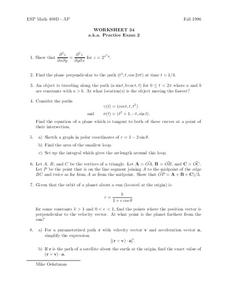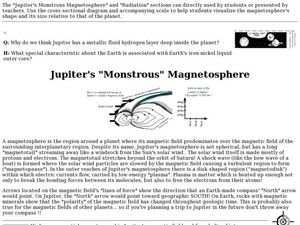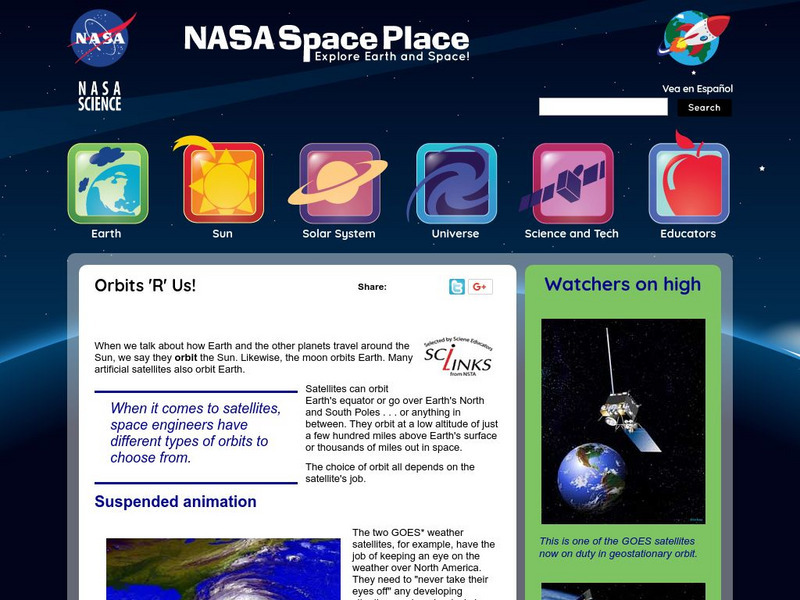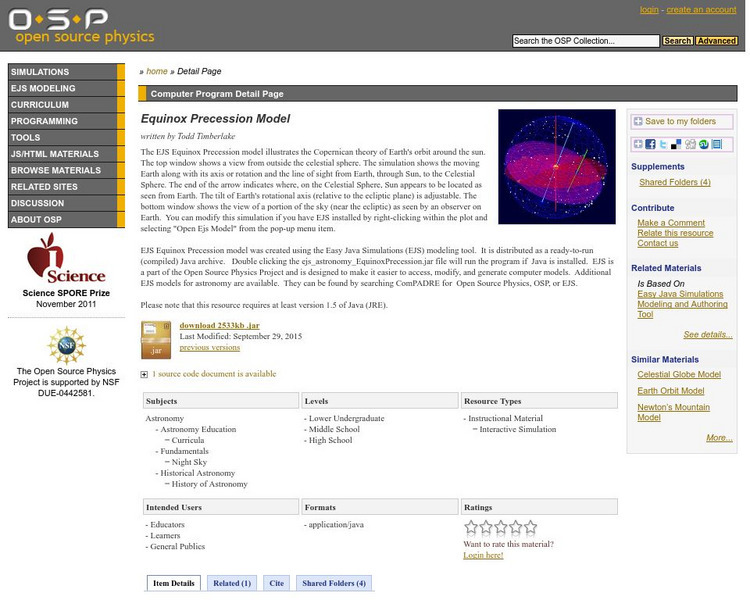Curated OER
Telescopes Then And Now
In this telescopes instructional activity, students will read information about the differences between the early telescopes and the modern telescopes. Then students will complete 2 short answer questions.
Curated OER
Worksheet 12
In this math worksheet, students explain the vector parametric equation for a line, scalar parametric equations, symmetric equations, and the implicit equation for a line.
Curated OER
What is Retrograde Motion
In this retrograde motion worksheet, students draw a diagram of the night sky by connecting dots to show retrograde motion. They compare retrograde motion to an optical illusion and answer questions about both.
Curated OER
Student Exploration: Phases of the Moon
In this moon phase worksheet, students complete 2 prior knowledge questions, then use the "Phase of the Moon Gizmo" to complete several activities, answering short answer questions when finished.
Curated OER
Moon Observations
Third graders create a model of the moon and use a flashlight to illustrate the various stages of the moon.
Curated OER
Space Vocabulary Quiz
In this space vocabulary worksheet, students draw lines to match 14 vocabulary words pertaining to space with their definitions.
Curated OER
Retrograde Motion of Mars
Students investigate the motion of Mars. In this space science lesson, students use transparencies to trace the path of Mars through constellations. Students discuss the characteristics of the planet.
Curated OER
Solar System
In this online interactive solar system instructional activity, students respond to 10 fill in the blank questions regarding the information included in the provided paragraphs.
Curated OER
The Tides of Change Worksheet (Part 1)
In this science worksheet, 1st graders track the tides of the ocean for a number of days and examine the data to determine the meaning of the pattern.
Curated OER
Moon Light Through the Month
Students work in small groups to arrange moon phase cards into the correct sequence. The goal is to circle as many consecutive numbers as possible in two minutes.
Curated OER
Worksheet 34
In this math worksheet, students find the plane perpendicular to the path (t2, t, cos 2πt) at time t = 1/4. Then they determine the location in which the object is moving the fastest.
Curated OER
The Solar System
In this crossword puzzle worksheet, students read the 20 clues about the solar system. Students then complete the puzzle with 20 words related to the solar system.
Curated OER
Jupiter's "Monstrous" Magnetosphere
Students explore Jupiter's magnetosphere. In this Jupiter instructional activity, students examine a diagram of the magnetic field that surrounds Jupiter.
American Association of Physics Teachers
Com Padre Digital Library: Open Source Physics: Earth Orbit Model
Nicolaus Copernicus developed the theory of Earth's orbit around the sun demonstrated in this science simulation.
NASA
Nasa: The Space Place: Orbits 'R' Us
Learn about how Earth orbits the sun and how satellites orbit the Earth. Discover the different types of satellites such as GOES and POES and what they are used to monitor.
CK-12 Foundation
Ck 12: Fifth Grade Science: Earth Science: Earth's Motion in Space
[Free Registration/Login may be required to access all resource tools.] Discusses the motion of the Earth with its day and night cycle, the seasons, the Earth's orbit around the Sun, and its year-long cycle.
American Association of Physics Teachers
Com Padre Digital Library: Open Source Physics: Equinox Precession Model
Experience a science simulation illustrating the Copernican theory of Earth's orbit around the sun.
TED Talks
Ted: Ted Ed: Reasons for the Seasons
Why do some regions experience full-time heat while others are reckoning with frigid temperatures and snow? And why are the seasons reversed in the two hemispheres? Rebecca Kaplan explains how the shape of the Earth's orbit around the...
E-learning for Kids
E Learning for Kids: Egypt: How Do the Sun, Moon and Earth Revolve Around Each Other?
Omar helps his parents sell things at the market. Join him while he learns about the relationship of the Sun, Moon, and Earth.
Scholastic
Scholastic: Study Jams! Science: Our Solar System: A Day on Earth
A video and a short multiple-choice quiz on how the Earth's tilt on its axis, its rotation, and its orbit around the Sun give us a 24-hour day, a 365-day year, and our seasons.
CK-12 Foundation
Ck 12: Earth Science: Revolutions of Earth
[Free Registration/Login may be required to access all resource tools.] How objects in the solar system orbit around each other.
CK-12 Foundation
Ck 12: Earth Science: Revolutions of Earth
[Free Registration/Login may be required to access all resource tools.] How objects in the solar system orbit around each other.
Oklahoma Mesonet
Oklahoma Climatological Survey: The Seasons
Find out what the seasons are and how they change. Through the use of excellent graphics, content explores the Earth's orbit around the sun and how sunlight reaches the earth at equinox and the winter solstice.
Utah Education Network
Uen: Trb 3:1: Investigation 4: Day and Night
A lesson for third graders in which they learn about the rotation of the Earth on its axis and how this movement creates day and night. They also examine the orbit of the moon about the Earth and the Earth's orbit around the sun.

























